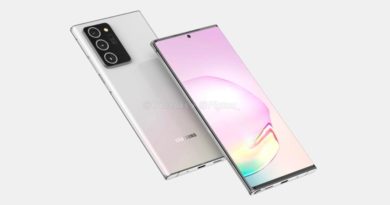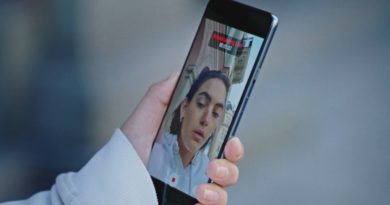Best phone in 2020: The top smartphones rated
The best phones deliver great cameras, the performance you need to multitask and the endurance to last the whole day. And you don’t have to wait for the Galaxy Note 20 or iPhone 12 if you need a great smartphone right now.
Some may prefer to have the biggest display possible along with the most advanced specs. And others want a solid mid-range phone that delivers all the basics without feeling cheap. To help you pick the best smartphone for you, we test dozens of handsets in the lab and in the real world to make our recommendations.
Our ranked smartphone list has something for everyone, including great bargains under $500 and under $300. Here are the best phones right now.
What are the best phones?
Based on our testing, the iPhone 11 is the best phone for most people, as it captures great photos, boasts a bright display and offers long battery life. It’s a great choice for under $700. The iPhone 12 is on the horizon with 5G, but that won’t be out until the fall.
If you need to save even more but still want an iPhone, the new iPhone SE for 2020 is the best smartphone for you, at just $399. It delivers a very good camera and fast A13 Bionic performance in a compact design.
The best Android phone is the OnePlus 8 Pro. It delivers a smooth 120Hz display, long battery life and super fast charging. The Samsung Galaxy S20 and Galaxy S20 Plus are also great premium Android phones.
While aging, the Google Pixel 3a (under $400) offers a superb camera for an aggressive price. The new OnePlus Nord also looks promising, which will be under $500 and offer 5G, but it is not being sold in the U.S.
Here are the best phones on the market right now.
The best phones you can buy today
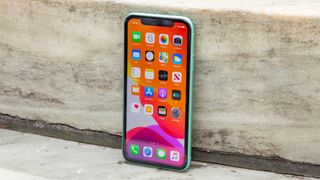
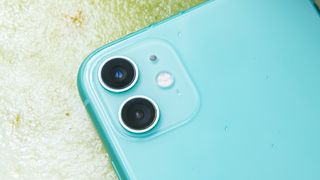
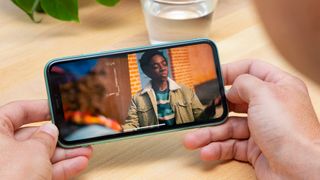

1. iPhone 11
The best phone for most people
Display: 6.1-inch LCD (1792×828) | CPU: A13 Bionic | RAM: 4GB | Storage / Expandable: 64GB, 128GB, 256GB / No | Rear camera: 12MP wide (ƒ/1.8); 12MP ultrawide (ƒ/2.4) / 12MP | Front camera: 12MP (ƒ/2.2) | Weight: 6.84 ounces | Battery life (Hrs:Mins): 11:20
Great photos, especially with Night Mode
Fast A13 Bionic CPU
Long battery life
Fast charger not included
Just 64GB of storage to start
The best smartphone for people who don’t want to spend a bundle, the iPhone 11 has killer dual cameras and a cheaper price than the iPhone 11 Pro. For a very reasonable $699, the iPhone 11 offers amazingly good low-light photos via its Night Mode, and there’s a new ultra-wide lens that lets you fit in more subjects or scene with its 120-degree field of view. Selfies get a serious upgrade, too, with a 12-MP camera that automatically switches to a wider view when you turn the phone to landscape mode.
The 6.1-inch LCD on the iPhone 11 isn’t OLED-great, but it’s colorful and bright. A blazing A13 Bionic processor, long battery life and your choice of six colors solidify the iPhone 11 as a winner. Should you wait for the iPhone 12? If you want 5G connectivity, it’s not a bad idea. But the iPhone 11 is the best iPhone right now ans the best phone overall.
Read our full iPhone 11 Review.
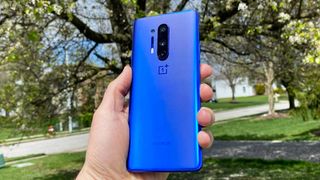
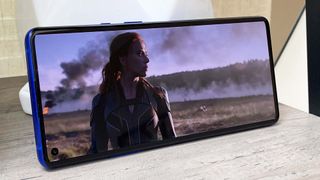
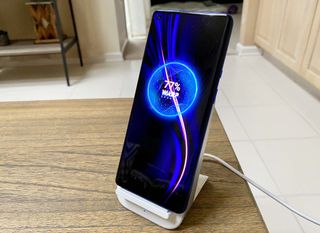
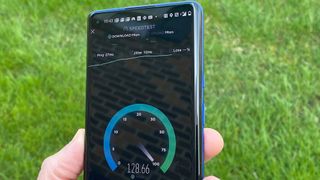
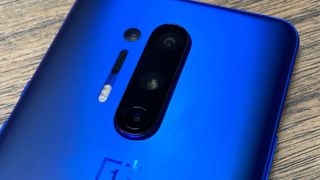
2. OnePlus 8 Pro
Display: 6.78-inch OLED (3168×1440) | CPU: Snapdragon 865 | RAM: 8GB, 12GB | Storage / Expandable: 128GB, 256GB / No | Rear camera: 48MP wide (ƒ/1.78); 48MP ultrawide (ƒ/2.2); 8MP 3X telephoto (ƒ/2.4); 5MP color filter | Front camera: 16MP (ƒ/2.5) | Weight: 7 ounces | Battery life (Hrs:Mins): 11:05
Bright and beautiful 120Hz display
Long battery life
Strong performance
Curved display causes accidental taps
No mmWave 5G
The OnePlus 8 Pro is one of the best phones because it packs so many features into a phone that costs less than premium flagships. You get performance that can match any leading phone and a gorgeous display with a fast 120Hz refresh rate for ridiculously smooth scrolling.
Opting for the fastest refresh rate can reduce battery life, but set the screen refresh rate at 60Hz and you can expect more than 11 hours of battery life — well ahead of what the average smartphone can pull off on our battery test. The OnePlus 8 Pro becomes the first OnePlus phone to support wireless charging; even better, it’s the fastest wireless charging we’ve ever seen.
Other phones sport more capable cameras, but the OnePlus 8 Pro four rear lenses performed capably in our tests, sometimes producing results that match what the best camera phones have to offer. If you want a great Android device, the OnePlus 8 Pro is proof you don’t need to spend more than $1,000 to get one of the best phones.
Read our full OnePlus 8 Pro review.
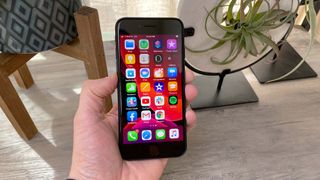
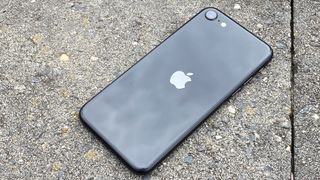
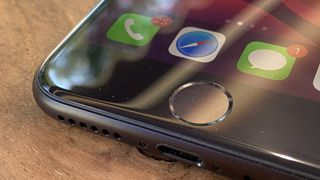
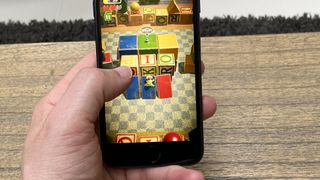
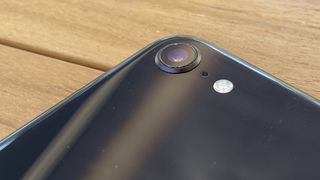
3. iPhone SE 2020
The new bargain among best phones
Display: 4.7-inch LCD (1334×750) | CPU: A13 Bionic | RAM: 3GB | Storage / Expandable: 64GB, 128GB, 256GB / No | Rear camera: 12MP (ƒ/1.8) | Front camera: 7MP (ƒ/2.2) | Weight: 5.22 ounces
Very affordable
Fast A13 Bionic performance
Supports wireless charging
Big bezels
No camera night mode
The iPhone SE 2020 finishes on the podium of our list of the best smartphones because it delivers exceptional power for under $400. The A13 Bionic chipset inside the new iPhone SE is the very same one you get in the iPhone 11 and iPhone 11 Pro. It’s a rare feat to see a flagship processor inside a device that is so inexpensive, and it makes the iPhone SE far and away the finest value in the budget phone segment.
But it’s not exclusively about that wicked-fast CPU. The latest baby iPhone also has a solid single-lens 12-megapixel camera, wireless charging, IP67 water resistance and premium build quality. The tradeoff to that is the SE’s very dated design, owing to its iPhone 8 roots — though Touch ID loyalists and users who find themselves pining for a more compact handset may be able to overlook that in favor of everything else the iPhone SE offers.
Read our full iPhone SE 2020 review.
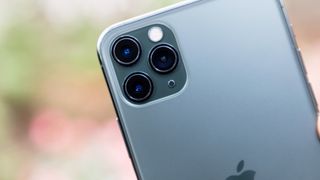
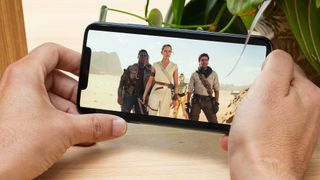

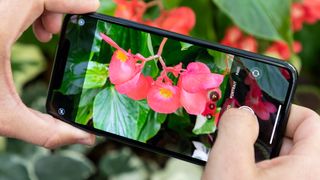
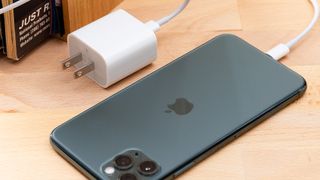
4. iPhone 11 Pro Max
The most versatile iPhone for photographers
Display Size: 6.5-inch OLED (2688×1242) | CPU: A13 Bionic | RAM: 4GB | Storage / Expandable: 64GB, 256GB, 512GB / No | Rear camera: 12MP wide (ƒ/1.8); 12MP ultrawide (ƒ/2.4); 12MP 2X telephoto (ƒ/2.0) | Front camera: 12MP (ƒ/2.2) | Weight: 7.97 ounces | Battery life (Hrs:Mins): 11:44
Gorgeous OLED display
Fast A13 Bionic CPU
Stellar triple cameras with Night mode
Longest battery life of any iPhone
Just 64GB of storage in base model
The iPhone 11 Pro Max has vaulted past the Android competition to become the top camera phone, thanks to a new Night Mode for much better photos in low light and a versatile ultra-wide lens. Plus, improved Smart HDR gives you superior portraits. Apple has upped the ante on video quality, too, with extended dynamic range and smooth cinematic stabilization.
The iPhone 11 Pro Max also offers the fastest processor yet with its A13 Bionic chip, a more durable design and a 6.5-inch OLED display so bright that it makes other phones look dingy. We wish Apple offered more than 64GB of storage, but once you add in nearly 12 hours of battery life, fast charging and more immersive audio, you have the nearly perfect smartphone.
Read our full iPhone 11 Pro Max review.
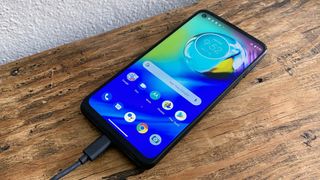
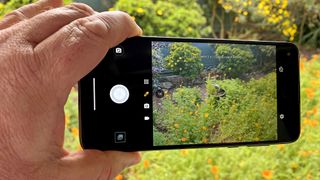

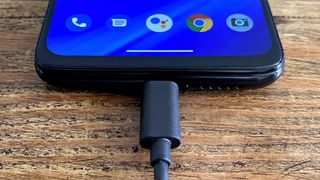
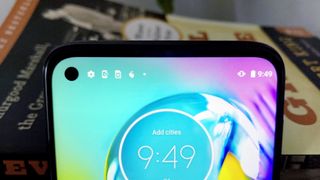
5. Moto G Power
The longest-lasting phone you can buy
Display: 6.4-inch LCD (2300×1080) | CPU: Snapdragon 665 | RAM: 4GB | Storage / Expandable: 64GB / Yes | Rear camera: 16MP (f/1.7) main, 2MP (f/2.2) macro, 8MP (f/2.2) ultra wide angle | Front camera: 16MP (ƒ/2.0) | Weight: 7 ounces | Battery life (Hrs:Mins): 16:10
The best battery life we’ve tested
Low price tag
Good performance and photos for the price
Screen isn’t very colorful
No optical zoom
If you want the best phone for lasting all day long, get the Moto G Power. This budget phone from Motorola makes the most of its massive 5,000 mAh battery, enduring for more than 16 hours on our battery test, in which we have a phone surf the web over LTE until it runs out of juice.
You don’t have to pay big bucks for that kind of battery life. The Moto G Power costs just $249, which is even cheaper than Apple’s iPhone SE. You will make some compromises though like an LCD screen instead of an OLED panel and a hefty 7 ounce weight.
Still, the Moto G Power’s performance and camera keep pace with other phones for its price range, and it even manages to include triple cameras (though not a telephoto lens). All told, it’s a pretty polished phone for less than $300, and you’ll never have to worry about finding a place to plug in.
Read our full Moto G Power review.
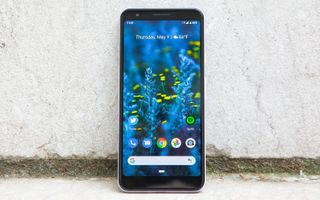

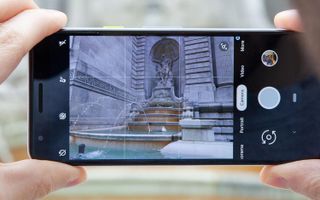
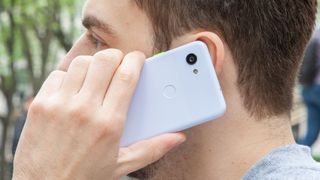
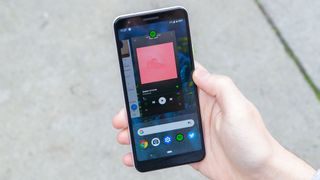
6. Google Pixel 3a
A budget-friendly camera phone for Android fans
Display: 5.6-inch OLED (2280×1080) | CPU: Snapdragon 670 | RAM: 4GB | Storage / Expandable: 64GB / No | Rear camera: 12MP (ƒ/1.8) | Front camera: 8MP (ƒ/2.0) | Weight: 5.2 ounces | Battery life (Hrs:Mins): 11:59
Flagship-caliber camera
OLED display
Low price
Display could be brighter
No wireless charging
The best smartphone for those on a budget is the $399 Google Pixel 3a. You’ll enjoy great shots in low light and very impressive portrait effects driven by computational photography. Yes, you get a less powerful processor and less polished materials than pricier flagship phones. But Google’s cheaper phone lasts longer on a charge, too, holding out for nearly 12 hours on our web surfing battery test. That makes the Pixel 3a a real bargain. The best part? You can often find the Pixel 3 on sale for under $350, so it pays to comparison shop.
The Pixel 4a is rumored to be launching this summer with even better specs and performance. However, if you’re looking for the best cheap Android phone right now, the Pixel 3a will not disappoint, especially since you can get very good discounts.
Read our full Google Pixel 3a review.
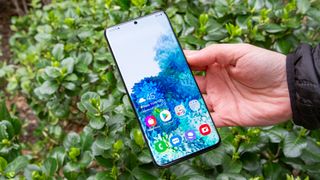
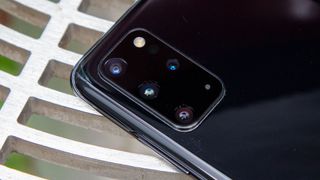
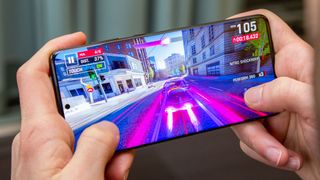
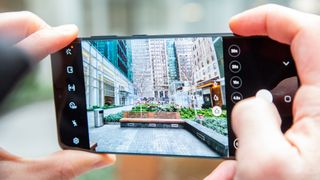
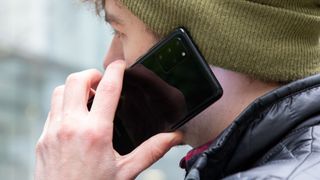
7. Samsung Galaxy S20 Plus
The best premium Android phone
Display: 6.7-inch OLED (3200×1440) | CPU: Snapdragon 865 | RAM: 12GB | Storage / Expandable: 128GB, 512GB / Yes | Rear camera: 12MP wide (ƒ/1.8); 12MP ultrawide (ƒ/2.2); 64MP 3X telephoto (ƒ/2.0); time-of-flight VGA | Front camera: 10MP (ƒ/2.2) | Weight: 6.56 ounces | Battery life (Hrs:Mins): 10:31
Impressive 64MP telephoto lens
Above-average battery life
Massive, 6.7-inch display with 120-Hz refresh rate
Expensive
120Hz refresh takes toll on battery life
Samsung has three strong phones in its Galaxy S20 lineup, but the Galaxy S20 Plus is the one that places highest on our best phone list, because it offers the best overall mix of features for the money. You get a gorgeous 6.7-inch display with a silky smooth 120Hz refresh rate, 5G connectivity and fast Snapdragon 865 processor, plus relatively long battery life (at least in 60Hz mode). The only features missing compared to the higher-end Galaxy S20 Ultra are a 108MP camera and more powerful Space Zoom — trade-offs most people will be willing to make to save $200 by opting for the $1,199 Galaxy S20 Plus.
That’s especially true since the Galaxy S20 Plus boasts some pretty impressive cameras in its own right. The new sensors capture bright and colorful photos, and the 3x lossless zoom is more powerful than what the iPhone 11 Pro Max delivers. The regular Galaxy S20 plus is a good choice at $999, too, if you prefer a smaller display. But if you want a big screen and future-proof 5G for years to come, you’re going to love the Galaxy S20 Plus.
Read our full Samsung Galaxy S20 Plus review.
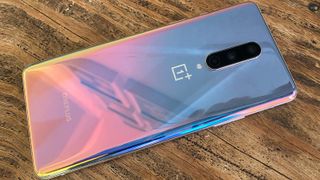
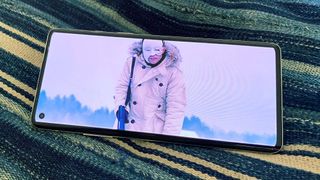
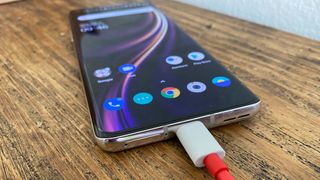
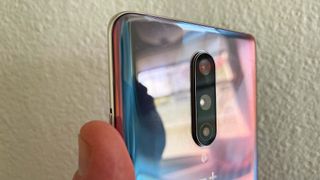
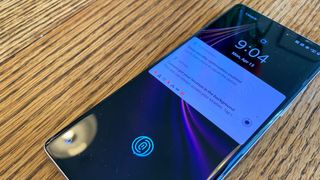
8. OnePlus 8
A solid iPhone 11 alternative for Android fans
Display: 6.55-inch OLED (2400×1080) | CPU: Snapdragon 865 | RAM: 8GB, 12GB | Storage / Expandable: 128GB, 256GB / No | Rear camera: 48MP wide (ƒ/1.7); 16MP ultrawide (ƒ/2.2); 2MP macro | Front camera: 16MP (ƒ/2.0) | Weight: 6.3 ounces | Battery life (Hrs:Mins): 11:04
Excellent display
Very good battery life
Powerful processor
Middling photos overall
Curved screen is prone to accidental touches
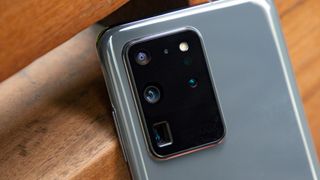
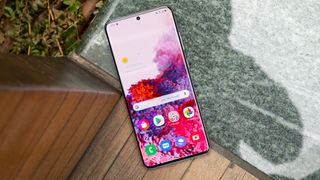
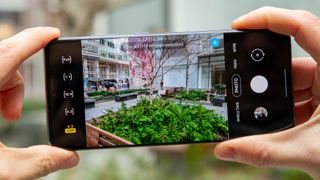
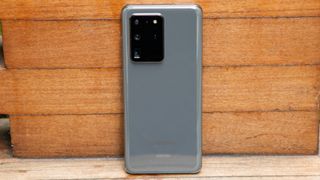
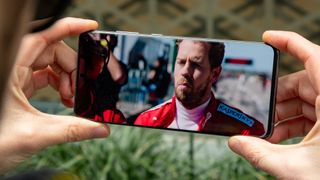
The OnePlus 8 might not offer superfast wireless charging of its pricier sibling, the OnePlus 8 Pro, but it’s a compelling Android value at $699. That’s largely because it has the very same Snapdragon 865 processor, along with a dazzling 90Hz display and a compelling design that comes in lots of eye-catching colors. You also get 5G connectivity and colorful 6.5-inch OLED display.
If we had one gripe about the OnePlus 8, it’d have to be the phone’s disappointing triple-lens camera system, which simply doesn’t capture photos as sharp and colorful as those from the firm’s more premium device. That said, if you can excuse images that look good but perhaps not great, the OnePlus 8 is one of the best smartphones for the money.
Read our full OnePlus 8 review.
9. Samsung Galaxy S20 Ultra
Crazy-powerful zoom meets huge display
Display: 6.9-inch OLED (3200×1400) | CPU: Snapdragon 865 | RAM: 12GB, 16GB | Storage / Expandable: 128GB, 512GB / Yes | Rear camera: 108MP wide (ƒ/1.8); 48MP 4x telephoto (ƒ/3.5); 12MP ultrawide (ƒ/2.2); time-of-flight VGA | Front camera: 40MP (ƒ/2.2) | Weight: 7.7 ounces | Battery life (Hrs:Mins): 11:58
Phenomenal cameras
Gorgeous 120Hz display
5G support
Very expensive
120Hz mode is a battery killer
Samsung spared no expense with the Galaxy S20 Ultra, which manages to pack in an impressive array of premium features — from a vast 6.9-inch display capable of a 120Hz refresh rate to 5G compatibility and a massive 5,000 mAh battery. Still, it’s the cameras that impress with the Galaxy S20 Ultra.
The quadruple camera array on the Galaxy S20 Ultra is highlighted by a 108MP wide angle lens and 48MP telephoto shooter. That latter feature can produce a 10x lossless zoom that really captures detail at a distance, and the digital zoom up to 30x is very good. The end result is a camera phone that can compete (and sometimes beat) the iPhone 11 Pro.
The Galaxy S20 Ultra starts at a pricey $1,399, and that assumes you’re satisfied with the 12GB of RAM and 128GB of storage in the base model. Still, the Galaxy S20 Ultra is a testament to just how much power companies like Samsung can pack into a smartphone.
Read our full Samsung Galaxy S20 Ultra review.
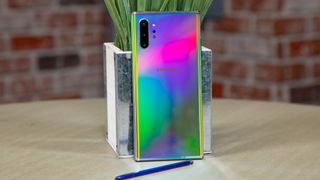
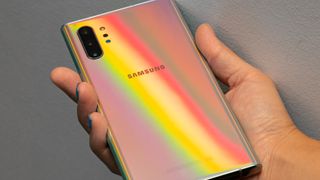


10. Samsung Galaxy Note 10 Plus
The all-screen phone with a powerful stylus
Display: 6.8-inch OLED (3040×1440) | CPU: Snapdragon 855 | RAM: 12GB | Storage / Expandable: 256GB, 512GB / Yes | Rear camera: 12MP wide (ƒ/1.5-ƒ/2.4); 16MP ultrawide (ƒ/2.2); 12MP telephoto (ƒ/2.1); time-of-flight VGA | Front camera: 10MP (ƒ/2.2) | Weight: 7.1 ounces | Battery life (Hrs:Mins): 11:46
Gorgeous 6.8-inch screen
Long battery life
S Pen supports Air Actions gestures
Aura Glow model smudges quickly
Air gestures can be finicky
The Samsung Galaxy Note 10 Plus is the best phone if you want the biggest display possible. This flagship sports a ginormous 6.8-inch OLED display that’s truly immersive, and you can now do more with the S Pen, including Air gestures and convert your handwriting to text. The phablet lasted nearly 12 hours on our battery test, and it charges fast, reaching 65% in 30 minutes. The Note 10 Plus’ four rear cameras take crisp photos and Samsung added Live Focus effects for video, so you can now get bokeh with your clips. But the still photo quality isn’t quite best in class based on our comparisons; the Pixel 4 has an edge among Android phones.
You’ll soon have a cheaper alternative to the Note 10 in the Galaxy Note 10 Lite, which has a massive 6.7-inch Super AMOLED display, a headphone jack, a triple-camera array and a huge 4,500 mAh battery. But if you need some of the best performance and battery in a phablet, the Note 10 Plus is still well worth the premium.
Read our full Samsung Galaxy Note 10 Plus review.
How to choose the best smartphone for you
- Android or iPhone? Android phones give you more choice in terms of price, size and innovative designs. However, iPhones offer speedier software updates, better games and apps and better security and privacy. See our iPhone vs Android face-off.
- Unlocked or carrier? Most shoppers in the U.S. buy new phones through their wireless carrier. But an unlocked phone gives you the freedom to buy the device without any sort of contract and then bring it to the provider you want to use.
- Screen size: If you’re looking for a big phone, 6 inches and up is a good place to start. The biggest phones are 6.5 to 6.8 inches. If you want something you can easily use with one hand, go with one of the best small phones with a screen under 6 inches.
- Cameras: Don’t pay attention to the megapixel count. Instead, look at camera face-offs between phones to see the photo quality and look for special features like Night Mode to get better quality in low light. Also see our best camera phone roundup.
- Battery life: Generally, phones with larger batteries (measured in mAh) offer the longest battery life, but that’s not always the case. That’s why we run our own battery test.
How we test smartphones
In order for a smartphone to make our best phone list, it needs to excel on several tests that we run on every handset. We perform some of these tests in our labs and some in the real world.
When it comes to performance, we rely on such synthetic benchmarks as Geekbench 5 and GFXBench to measure graphics performance. These tests allow us to compare performance across iPhones and Android devices. We also run a real-world video transcoding test on each phone using the Adobe Premiere Rush app and time the result.
To measure the quality of a phone’s display, we perform lab tests to determine the brightness of the panel (in nits), as well as how colorful each screen is (DCI-P3 color gamut). In these cases, higher numbers are better. We also measure color accuracy of each panel with a Delta-E rating, where lower numbers are better and score of 0 is perfect.
One of the most important tests we run is the Tom’s Guide battery test. We run a web surfing test over 5G or 4G at 150 nits of screen brightness until the battery gives out. In general, a phone that lasts 10 hours or more is good, and anything above 11 hours makes our list of the best phone battery life.
Last but not least, we take the best phones out in the field to take photos outdoors, indoors and at night in low light to see how they perform versus their closest competitors. We take shots of landscapes, food, portraits and more, and also allow you to be the judge with side-by-side comparisons in our reviews.
